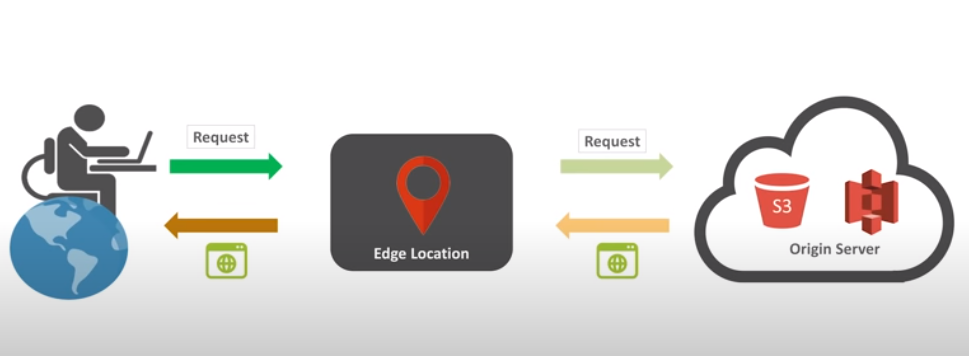CloudFront Distribution: False Statements
Question
I have a web application that has been deployed to the AWS Mumbai region.
My application soon becomes popular.
Now there are users all over the world who would like to access it.
If I use a CloudFront distribution for doing so, which statements are FALSE for CloudFront? (Select TWO.)
Answers
Explanations
Click on the arrows to vote for the correct answer
A. B. C. D. E.Answer: C, D.
Option A is incorrect.
CloudFront does use the concept of Edge locations for caching content that is requested by the user.
When a user in the US requests for content in a web server hosted in the Mumbai region, CloudFront will initially check whether the content is available at the nearest edge location in the US region.
If it is available, the content will be served directly from the Edge location.
If not, CloudFront will request the Origin Server, get the content and cache it at the Edge location for serving future requests.
Option B is incorrect.
Every HTTP connection runs on TCP/IP.
For every HTTP connection to work, a TCP handshake has to be initially completed.
Let's consider the following 2 scenarios.
i)
Two users without an Edge proxy - 1 Trip is 100ms.
We can see here that the total turnaround time for both users is 400ms.
ii)
Two users with a CloudFront Edge proxy.
We can see here that for the first user, the total turnaround time is 400ms, while for the second user, the total turnaround time is 240ms(4x20 + 2x80 )
Instead of re-establishing a second handshake with the Origin, CloudFront leverages the Keep-alive session resulting in reduced latency.
Option C is CORRECT since we can use the Time ToLive (TTL) value to enable caching of dynamic content.
Option D is CORRECT.
CloudFront has been opened to use Origin servers of your choice that can be S3 or a custom origin like EC2, ELB, etc...
Option E is incorrect.
CloudFront has the ability to customize content at the Edge location before delivering it to its users.
For example, a Lambda function (usually referred to as lambda@Edge) can use the following triggers Viewer Request, Origin Request, Origin Response, Viewer response that can be used for customizing the End User experience.
References:
https://docs.amazonaws.cn/en_us/AmazonCloudFront/latest/DeveloperGuide/Introduction.html https://youtu.be/sQNONcj0cvc
CloudFront is a Content Delivery Network (CDN) provided by Amazon Web Services (AWS). It uses a network of Edge locations to cache and deliver content faster to users. When a user requests content, the request is routed to the nearest Edge location, which serves the content from its cache. If the content is not present in the cache, the request is forwarded to the Origin Server, which can be an Amazon S3 bucket, an EC2 instance, or a Load Balancer.
The following are the given statements and their explanations:
A. CloudFront uses the concept of Edge locations for caching and delivering content faster to its users. This statement is true. Edge locations are the key feature of CloudFront. They are distributed around the world and are located closer to users, which helps reduce latency and improve performance.
B. CloudFront can help improve performance by using Keep-alive connections between the Edge locations & the origin server. This statement is true. Keep-alive connections allow multiple requests to be sent over a single connection, reducing the overhead of establishing a new connection for each request.
C. CloudFront does not cache dynamic content. This statement is false. CloudFront can cache dynamic content, but it requires additional configuration to specify the caching behavior for dynamic content.
D. CloudFront can use only S3 buckets as their Origin Server from where they can cache content. This statement is false. CloudFront can use a variety of Origin Server types, including S3 buckets, EC2 instances, Elastic Load Balancers, and even custom HTTP servers.
E. CloudFront can customize content at the Edge locations before delivering it to users. This statement is true. CloudFront provides several ways to customize content at the Edge locations, including modifying headers, rewriting URLs, and using Lambda@Edge functions to add custom logic.
In summary, the false statements are C and D. CloudFront can cache dynamic content, and it can use a variety of Origin Server types, not just S3 buckets.
